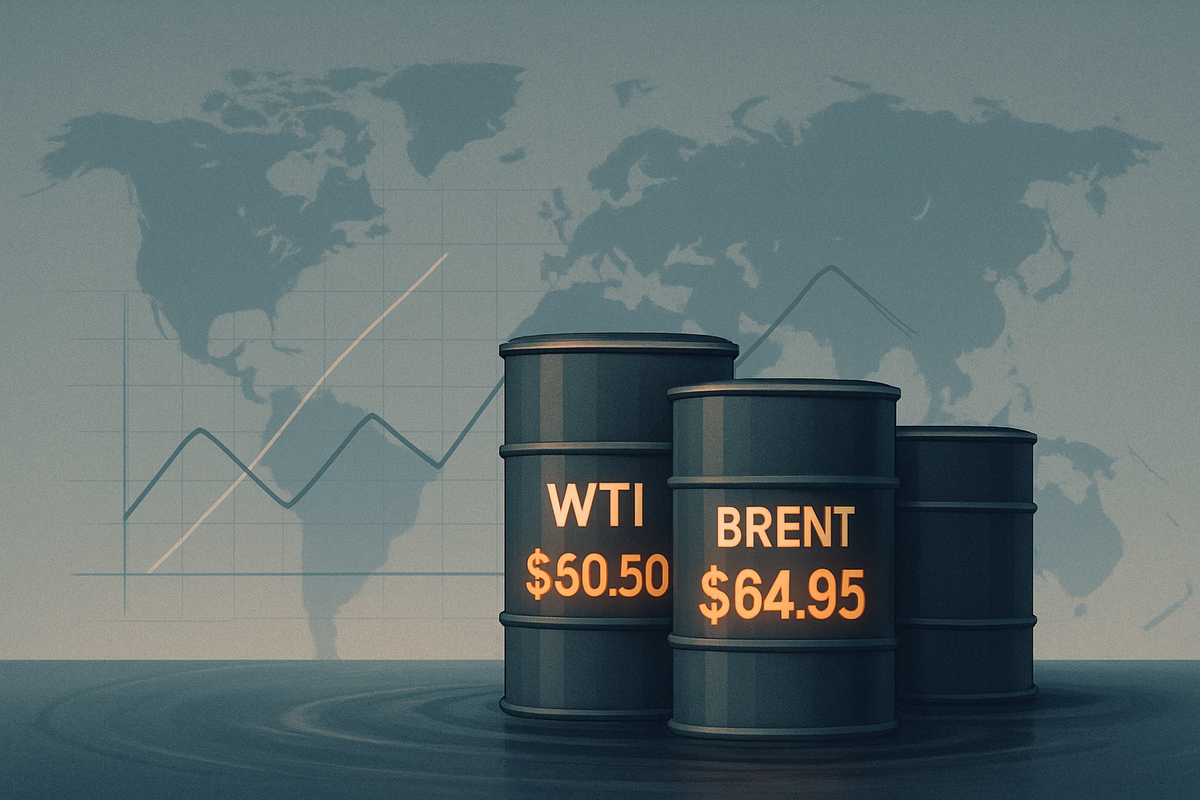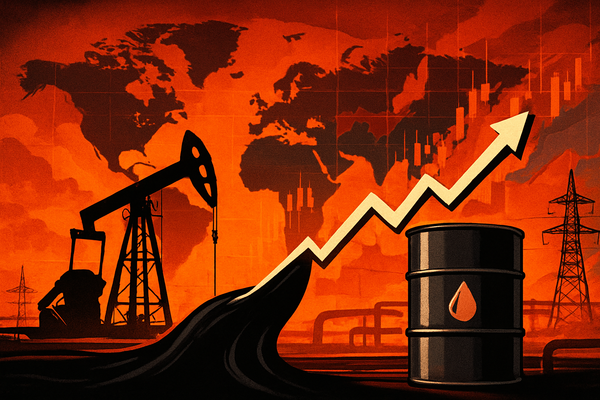Crude Awakening: Oil Market Navigates Stability Amidst Surging Supply and Shifting Sands

New York, NY – October 30, 2025 – The global crude oil market finds itself at a pivotal juncture, exhibiting a delicate balance as West Texas Intermediate (WTI) hovers around $60.50 per barrel and Brent crude trades near $64.95. This apparent stability, however, masks an underlying tension driven by surging global supply, a softening demand outlook, and strategic shifts by major producers. Investors and industry observers are keenly watching for signs of how this equilibrium will evolve, particularly with significant inventory builds and a complex geopolitical landscape shaping the horizon.
The current price levels reflect a market grappling with an anticipated global oversupply, largely fueled by robust production from non-OPEC+ nations and a strategic unwinding of production cuts by the OPEC+ alliance. While geopolitical flashpoints and ongoing trade negotiations inject periodic volatility, the prevailing sentiment leans towards a bearish outlook, underscored by a strong U.S. dollar and forecasts of substantial inventory accumulation. This intricate dance of supply, demand, and external forces sets the stage for a dynamic period in the energy sector.
The Confluence of Factors: A Market in Flux
The detailed picture of the crude oil market on this day reveals a multi-faceted scenario. Global oil demand growth is projected to remain subdued through 2026, with annual gains estimated at around 700,000 barrels per day (kb/d) – a significant deceleration from historical trends. This weaker demand outlook is attributed to a "harsher macro climate," including slower manufacturing activity in Europe and China, coupled with the accelerating impact of transport electrification.
Conversely, global oil supply has been on an upward trajectory, reaching 108 million barrels per day (mb/d) in September 2025. A key driver of this surge is the "American quintet" – the United States, Canada, Brazil, Guyana, and Argentina – which has significantly increased output, playing a crucial role in balancing the market. The U.S. Energy Information Administration (EIA) forecasts U.S. crude oil production to average 13.5 million b/d in both 2025 and 2026. Simultaneously, OPEC+ has signaled a strategic shift, unwinding production cuts and planning to increase output, with a third monthly hike of 137,000 bpd expected for December. This move, aimed at reclaiming market share, comes despite a weakening economic outlook and contributes significantly to concerns about a looming supply surplus, with some 2.2 million bpd of extra OPEC crude potentially returning to the market by next September.
Adding to the complexity are geopolitical factors. Recent U.S. sanctions on Russia's largest oil producers, Rosneft PJSC (MCX: ROSN) and Lukoil PJSC (MCX: LKOH), aim to increase the cost of Russia's trade without causing a global price spike. While Russia has historically found ways to circumvent restrictions, the market watches for actual disruptions. Meanwhile, optimism surrounding potential U.S.-China trade talks, with a preliminary agreement expected, offers some support to prices by easing global economic growth concerns. However, the overarching bearish sentiment is reinforced by a strong U.S. Dollar (DXY holding around 106.5), making oil more expensive for international buyers, and forecasts from the International Energy Agency (IEA) projecting a significant oil oversupply of 2.35 million bpd in 2025 and 4 million bpd in 2026.
Corporate Fortunes: Navigating the Price Environment
In this environment of stable-to-potentially-declining crude oil prices, different segments of the energy industry will experience varying fortunes. Companies heavily involved in upstream exploration and production (E&P), particularly those with higher lifting costs or significant debt burdens, may face headwinds. Independent E&P companies like Pioneer Natural Resources (NYSE: PXD) or Occidental Petroleum (NYSE: OXY), which have seen significant growth during higher price cycles, might need to reassess capital expenditure plans and focus on cost efficiencies to maintain profitability. Their ability to generate free cash flow and return capital to shareholders could be challenged if prices trend lower.
Conversely, downstream companies and refiners are likely to benefit from lower crude input costs. Companies such as Marathon Petroleum (NYSE: MPC) or Valero Energy (NYSE: VLO) could see improved refining margins, translating into stronger earnings. Lower feedstock costs allow them to produce gasoline, diesel, and other petroleum products more cheaply, potentially boosting their profitability even if demand growth remains modest. Similarly, consumers will indirectly benefit from stable or lower fuel prices, easing inflationary pressures and potentially stimulating discretionary spending in other sectors.
Integrated oil majors, like ExxonMobil (NYSE: XOM) and Chevron (NYSE: CVX), with diverse portfolios spanning upstream, midstream, and downstream operations, are generally better positioned to weather price fluctuations. Their downstream refining and chemical businesses can act as a hedge against lower upstream profits. However, even these giants will need to optimize their portfolios, focusing on high-return projects and divesting non-core assets to maintain shareholder value in a lower-price environment. Service providers to the oil and gas industry, such as Schlumberger (NYSE: SLB) or Halliburton (NYSE: HAL), could see reduced activity and pricing pressure if E&P companies scale back drilling and completion programs.
Wider Implications: Beyond the Barrel
The current crude oil market stability, underpinned by an impending supply glut, has broader implications that extend far beyond the energy sector. This scenario could temporarily slow the momentum of the energy transition, as lower fossil fuel prices might reduce the economic incentive for rapid adoption of renewable energy alternatives. While the long-term trajectory towards decarbonization remains, a period of cheaper oil could make it harder for nascent green technologies to compete purely on cost.
Ripple effects will be felt across various industries. The transportation sector, including airlines like Delta Air Lines (NYSE: DAL) and trucking companies, stands to benefit from lower fuel costs, potentially boosting their profitability and allowing for more competitive pricing. Manufacturers relying on petroleum-derived feedstocks will also see cost relief. Conversely, nations heavily reliant on oil exports, particularly those with high fiscal breakeven prices like Saudi Arabia, may face budget pressures, potentially leading to adjustments in public spending or economic diversification efforts.
Regulatory and policy implications are also significant. Governments might face less immediate pressure to implement stringent fuel efficiency standards or carbon taxes if oil prices remain low, though climate change commitments will continue to drive long-term policy. Historically, periods of significant oil oversupply, such as in the mid-1980s or 2014-2016, have led to sustained periods of lower prices, reshaping geopolitical alliances and incentivizing technological advancements in production. The current situation bears some resemblance, with technological breakthroughs in shale production and strategic shifts by OPEC+ once again driving a supply-side revolution.
What Comes Next: Navigating the Uncertainties
The short-term outlook for crude oil prices suggests continued volatility, with a prevailing downward pressure due to the anticipated supply surplus. The upcoming OPEC+ meeting at the end of November will be a critical event, as the market awaits decisions on production levels. Should OPEC+ choose to maintain or increase output amidst weakening demand, prices could dip further. Conversely, any unexpected production cuts could provide a temporary floor. Beyond that, global economic indicators, particularly from China and Europe, will dictate the pace of demand recovery.
In the long term, the trajectory of oil prices will be shaped by the interplay of global economic growth, the accelerating energy transition, and geopolitical stability. Strategic pivots will be essential for energy companies. Upstream producers may need to focus on capital discipline, optimizing existing assets, and investing in lower-carbon technologies. Integrated majors might accelerate their diversification into renewable energy and sustainable solutions, adapting to a future where oil plays a less dominant role.
Market opportunities could emerge for companies specializing in carbon capture, hydrogen production, and advanced energy storage, as the long-term push for decarbonization remains. Challenges will include managing shareholder expectations in a potentially lower-growth environment for traditional oil and gas, and navigating increasing environmental, social, and governance (ESG) pressures. Potential scenarios range from a prolonged period of stable, lower prices that spurs economic growth globally, to renewed geopolitical tensions that could disrupt supply and send prices soaring. The market will remain a battleground between fundamental supply-demand dynamics and external shocks.
Comprehensive Wrap-Up: A Market on the Cusp
The crude oil market, with WTI at $60.50 and Brent at $64.95, stands at a fascinating juncture on October 30, 2025. The key takeaway is a market facing an impending supply glut, driven by robust non-OPEC+ production and OPEC+'s strategic unwinding of cuts, set against a backdrop of subdued global demand. While geopolitical events and trade talks inject volatility, the fundamental forces point towards a challenging environment for oil prices in the near to medium term.
Moving forward, the market will be defined by its ability to absorb this excess supply. Investors should closely monitor OPEC+ decisions, global economic growth data, particularly from major consuming nations, and the pace of the energy transition. The divergence between strong U.S. domestic demand, as indicated by recent inventory draws, and the broader global oversupply narrative adds a layer of complexity. Companies with strong balance sheets, diversified operations, and a clear strategy for the energy transition are best positioned to navigate these turbulent waters. The next few months will be crucial in determining whether the current stability gives way to a sustained bear market or if unforeseen events re-ignite price volatility.
This content is intended for informational purposes only and is not financial advice



